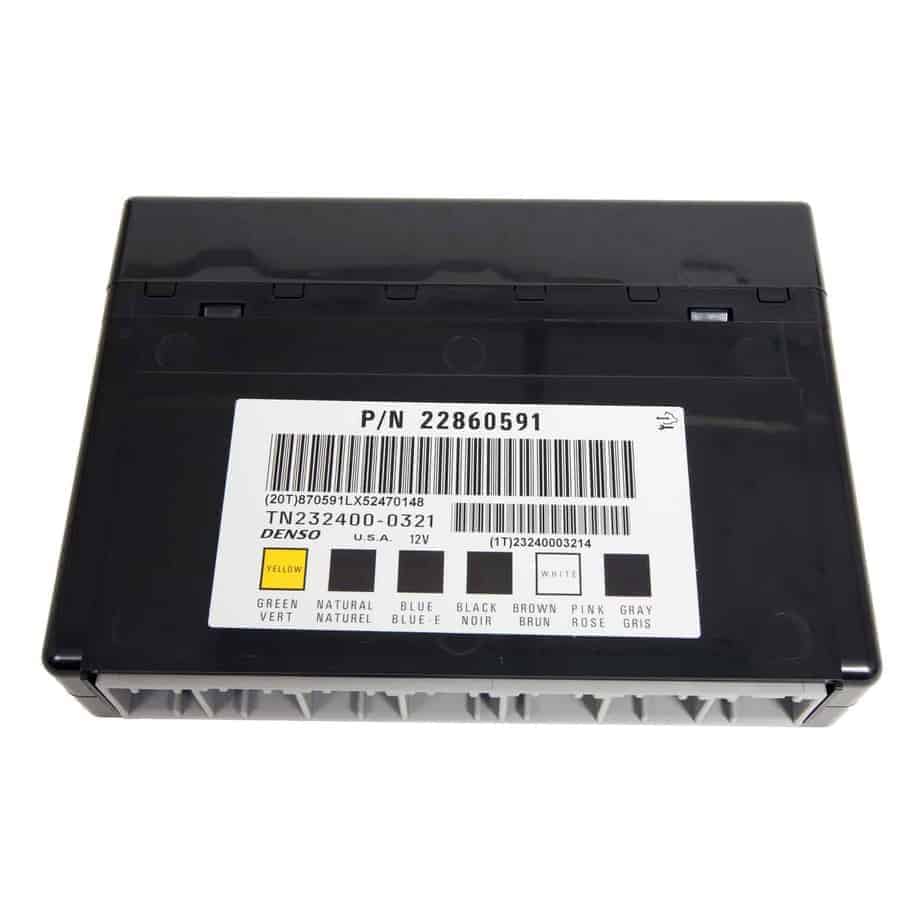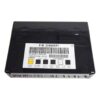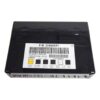{
“title”: “Programmed 2010 Escalade BCM Body Control Module 15828601“,
“long_description”: “
Restore Full Functionality to Your Vehicle’s Electronics
n
Are you experiencing frustrating and unpredictable electrical problems in your Cadillac Escalade or other GM vehicle? Issues like flickering interior or exterior lights, power windows and locks operating on their own, or a security system that won’t behave are common signs of a failing Body Control Module (BCM). The BCM is the central computer for your vehicle’s comfort and convenience features, and when it malfunctions, it can cause a wide range of baffling symptoms. This replacement Body Control Module, part number 15828601, is the definitive solution to get your vehicle back in perfect working order.
nn
From the Diagnostic Bay
n
We had a 2010 Escalade come in with a classic “haunted car” complaint. The dome lights would randomly turn on overnight, draining the battery. The owner had already replaced the battery twice. After checking for obvious shorts and testing the battery/alternator, we connected our scanner and found multiple communication error codes pointing to the BCM. A failing internal relay inside the original BCM was intermittently sticking, causing the light circuit to remain active. Swapping in a VIN-programmed BCM like this one solved the battery drain and all the other strange electrical issues in under an hour.
n
nn
Common Symptoms of a Failing BCM
n
- n
- ✔ Erratic or non-functional interior and exterior lights.
- ✔ Power windows, door locks, or mirrors working intermittently or not at all.
- ✔ Horn sounding unexpectedly or not working when pressed.
- ✔ Vehicle security system faults or false alarms.
- ✔ Dashboard warning lights appearing for no reason.
- ✔ Intermittent no-start conditions or issues with key fob recognition.
- ✔ Unexplained battery drain when the vehicle is off.
n
n
n
n
n
n
n
nn
Why Choose Our 2010 Escalade BCM?
n
Getting a replacement BCM from a dealership often involves multiple appointments, high costs for the part, and separate, expensive programming fees. We simplify the entire process. This is a direct-fit replacement for a wide range of GM vehicles, and we handle the critical programming for you before it ever leaves our facility. Simply provide your vehicle’s VIN during checkout, and we’ll flash the module with the latest GM software specific to your vehicle’s configuration. This ensures a seamless installation process, saving you time and money.
nn
Important Installation Notes
n
While this module is designed for a straightforward swap, some vehicles may require additional steps after installation. These are known as relearn procedures and can sometimes be necessary to sync the new BCM with other modules in your vehicle.
n
- n
- Airbag System Sync: If your airbag warning light is on after installation, a professional scan tool is needed to perform the “Setup SDM Primary Key in BCM” procedure. This syncs the new BCM with the airbag system.
- Brake Pedal Position Relearn: To ensure correct brake light and traction control operation, a brake pedal position sensor relearn may be required on certain models.
n
n
n
This module is a guaranteed fit for part number 15828601 and is a direct replacement for numerous other part numbers, including: 10382479, 15093910, 15276271, 15299986, 15819552, 15837419, 15872388, 20815898, 25892622, and many more as listed in the fitment data.
nn
Frequently Asked Questions
What does the Body Control Module (BCM) do?
The BCM is a computer that acts as the central hub for your vehicle’s body electronics. It controls non-engine related functions like power windows, locks, lights, security system, wipers, and various other comfort and convenience features.
Is this BCM really plug-and-play?
Yes, for most vehicles. Because we program it to your specific VIN before shipping, it eliminates the need for dealer programming. In some cases, simple relearn procedures for systems like the airbags or brake sensor may be required post-installation, which can be done with a capable diagnostic tool.
How do I provide my VIN for programming?
After you complete your purchase, you will receive instructions on how to send us your 17-digit Vehicle Identification Number (VIN). We cannot ship your part until we receive this information, as the programming is essential for the part to function correctly in your vehicle.
What happens if my airbag light is on after I install the BCM?
This is a known possibility. It means the new BCM needs to be electronically introduced to the airbag system’s computer (SDM). A technician with a professional diagnostic tool will need to perform the “Setup SDM Primary Key in BCM” procedure to resolve the light.
Do I need to send my old BCM back?
No, there is no core charge for this part. You can keep your original module.
“,
“short_description”: “
Restore Your Escalade’s Electronics!
Fix frustrating electrical issues with our pre-programmed Body Control Module. We flash this BCM to your vehicle’s VIN before shipping, eliminating the need for a costly dealership visit. Restore your lights, locks, and windows to perfect working order. Order today!
“,
“meta_description”: “Experiencing electrical issues? Our pre-programmed 2010 Escalade BCM (15828601) is the perfect fix. VIN-matched for easy installation. Order now and fix your vehicle!”,
“focus_keyword”: “2010 Escalade BCM”,
“image_meta”: {
“alt_text”: “Programmed 2010 Cadillac Escalade BCM Body Control Module, part number 15828601.”,
“image_title”: “2010 Escalade BCM 15828601“,
“caption”: “This BCM comes pre-programmed to your vehicle’s VIN for a straightforward installation.”,
“description”: “Front view of the Body Control Module (BCM) compatible with 2010 Cadillac Escalade and other GM vehicles. Part number 15828601. This unit controls body electronics like lights, windows, and locks.”
}
}


